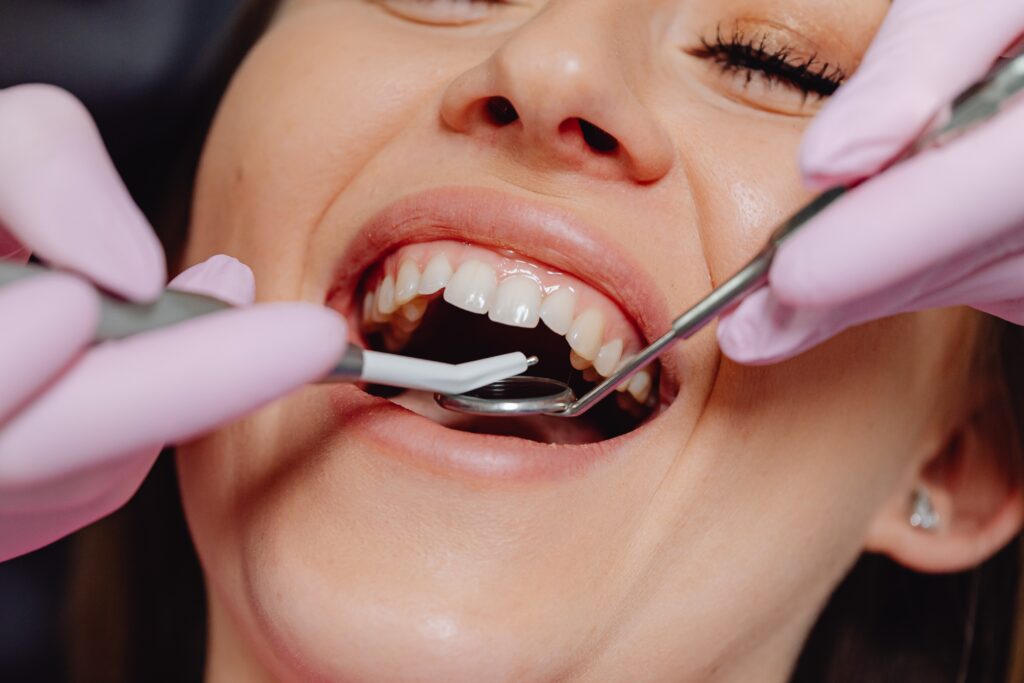
The treatment of periodontal disease depends on the severity of the condition. It typically involves a combination of professional dental care and ongoing oral hygiene practices at home. Here are the primary treatments for periodontal disease:
-
- Scaling and Root Planing (Deep Cleaning): This is a common initial treatment for periodontal disease. It involves the removal of plaque and tartar deposits from the tooth surfaces, both above and below the gumline. The dentist or dental hygienist uses specialised instruments to clean the tooth roots (root planing) and smooth the tooth surfaces to prevent further buildup.
-
- Antibiotics: In some cases, antibiotics may be prescribed to help control bacterial infection and inflammation. They can be in the form of oral antibiotics or localised antibiotic treatments, such as antibiotic gels or microspheres placed directly into the gum pockets.
-
- Surgical Procedures: For more advanced cases of periodontal disease, surgical procedures may be necessary to access and clean areas that cannot be reached with scaling and root planing. Common surgical treatments include:
-
- Flap Surgery (Pocket Reduction Surgery): The gum tissue is folded back to remove tartar deposits and then sutured back into place.
-
- Bone Grafts: In cases where bone loss has occurred, grafting procedures may be performed to regenerate lost bone tissue.
-
- Gingival Grafts: To treat gum recession, tissue grafts can cover exposed tooth roots.
-
- Maintenance and Ongoing Care: Periodontal disease is a chronic condition, so ongoing care is essential. After treatment, patients typically need frequent dental check-ups and cleanings (often every 3-4 months) to monitor their oral health and prevent the disease from returning or progressing.
-
- Oral Hygiene Education: Patients are educated on proper oral hygiene techniques, including effective brushing, flossing, and antimicrobial mouth rinses to maintain good oral health at home.
-
- Lifestyle Modifications: Quitting smoking, managing underlying health conditions like diabetes, and making dietary changes may be recommended to improve overall oral health and reduce the risk of periodontal disease progression.
-
- Orthodontic Treatment: In some cases, orthodontic treatment may be recommended to correct misaligned teeth and improve the ability to clean the teeth properly, reducing the risk of future periodontal issues.
The specific treatment plan for periodontal disease varies from person to person, depending on the severity of the condition and individual factors. It is crucial to work closely with your dentist or periodontist to create a personalised treatment plan and follow their recommendations to manage and control the periodontal disease effectively. Early detection and intervention are vital to preventing the disease from causing significant damage to your oral healths

